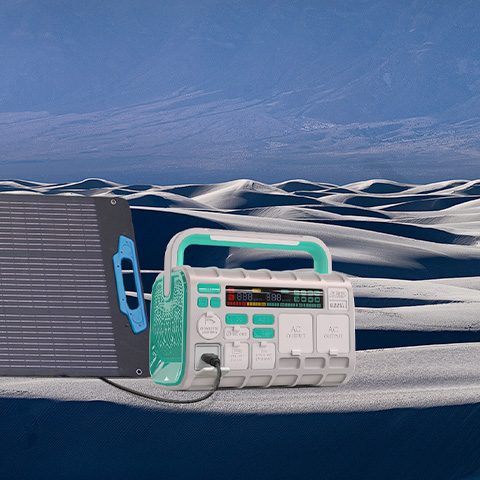A portable power station is a versatile and compact device designed to provide electrical power on the go. It serves as a convenient and reliable source of energy for a variety of applications, including outdoor activities, emergency situations, and even home use. But what exactly is a portable power station, and how does it work? Let’s explore its key features, components, and common uses.
Key Features of a Portable Power Station
- Portability: As the name suggests, a portable power station is designed to be easily transportable. It typically comes with a handle or wheels, making it convenient to carry or move around.
- Rechargeable Battery: The core component of a portable power station is its rechargeable battery, usually made of lithium-ion or, in some cases, lead-acid. The battery stores electrical energy that can be used to power various devices.
- Multiple Output Ports: Portable power stations come equipped with a variety of output ports, including AC outlets, DC carports, USB-A, and USB-C ports. This allows you to charge and power multiple devices simultaneously.
- Inverter: An inverter is responsible for converting the stored DC (Direct Current) power in the battery to AC (Alternating Current) power, which is what most household appliances and electronic devices use.
- Display and Controls: Most portable power stations feature an LCD or LED display that provides important information such as battery level, input/output power, and charging status. Control buttons or touch interfaces allow you to manage the device’s functions.
- Safety Features: Advanced portable power stations include built-in safety features like overcharge protection, short-circuit protection, and temperature control to ensure safe operation for both the power station and connected devices.
How Does a Portable Power Station Work?
- Charging the Battery: The battery in a portable power station can be charged using various methods:
- AC Wall Outlet: Plugging the power station into a standard household outlet.
- Solar Panels: Connecting compatible solar panels to harness solar energy.
- Car Charger: Using a car’s 12V DC outlet for charging on the go.
- Storing Energy: Once charged, the battery stores electrical energy as DC power.
- Converting Power: When you connect a device to the power station, the inverter converts the stored DC power into AC power if needed. For devices that require DC power, such as USB-powered gadgets, the power is supplied directly.
- Powering Devices: You can connect multiple devices to the various output ports. The power station manages the energy flow to ensure that each connected device receives the appropriate amount of power.
Common Uses of a Portable Power Station
- Outdoor Activities: Ideal for camping, hiking, and other outdoor adventures where access to electricity is limited. It can power lights, cooking appliances, and electronic gadgets.
- Emergency Backup: Provides a reliable source of power during power outages, ensuring that essential devices like medical equipment, lights, and communication devices remain operational.
- Remote Work: Useful for remote work setups, especially in locations without reliable access to electricity. It can keep laptops, smartphones, and other essential work equipment running.
- Recreational Vehicles (RVs): Perfect for RV enthusiasts who need a portable and reliable power source. It can power appliances, lights, and entertainment systems in the vehicle.
- Home Use: Can be used as a backup power source for small household appliances and electronic devices, providing peace of mind during unexpected power interruptions.

In summary, a portable power station is a compact and versatile device designed to provide electrical power wherever and whenever it’s needed. With its rechargeable battery, multiple output ports, and safety features, it serves as an invaluable tool for outdoor enthusiasts, emergency preparedness, remote workers, and homeowners alike. Whether you’re off the grid, on the road, or facing a power outage, a portable power station offers a convenient and reliable solution to keep your devices powered and operational.




